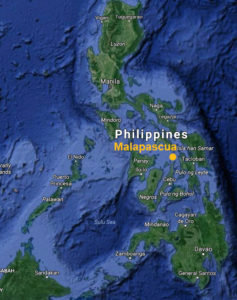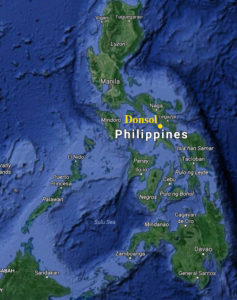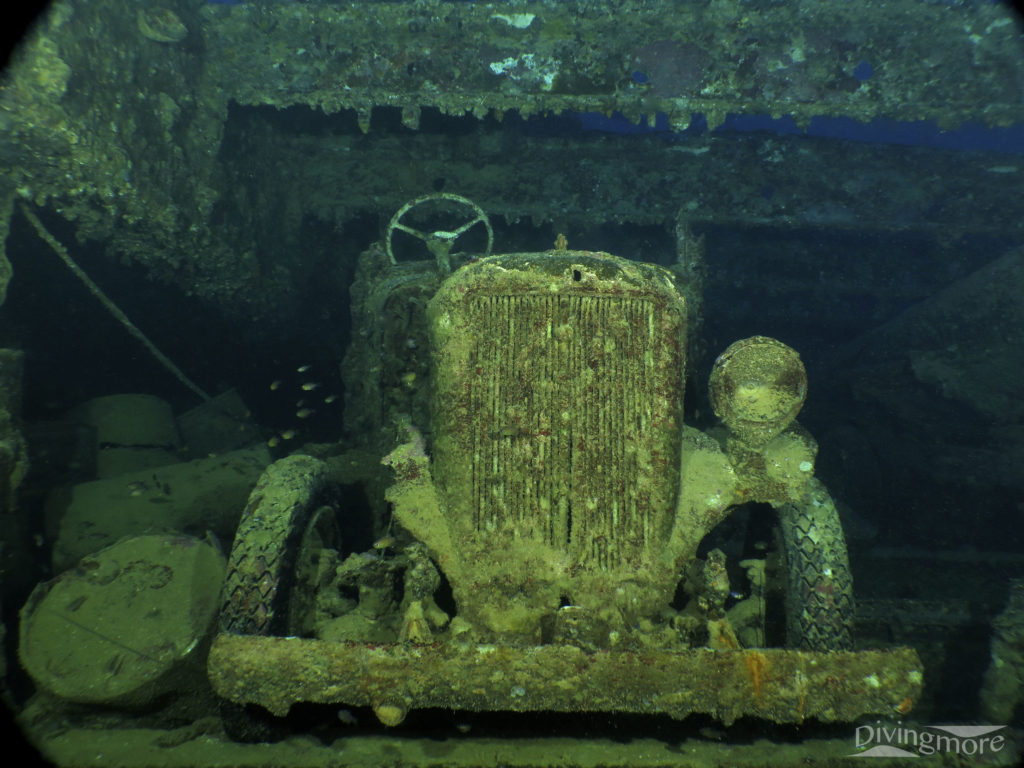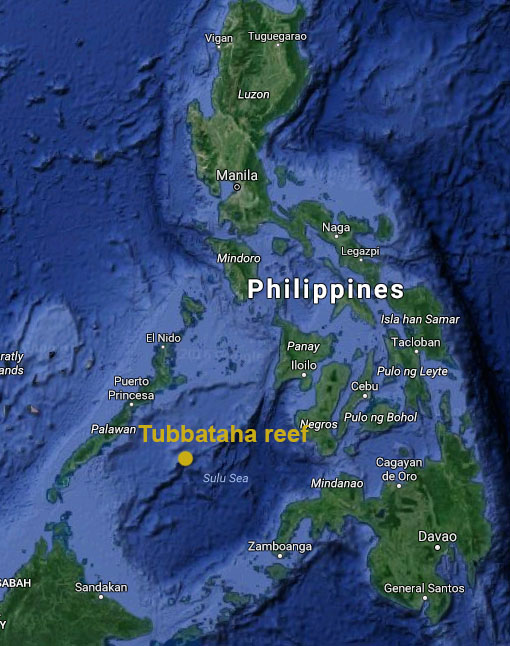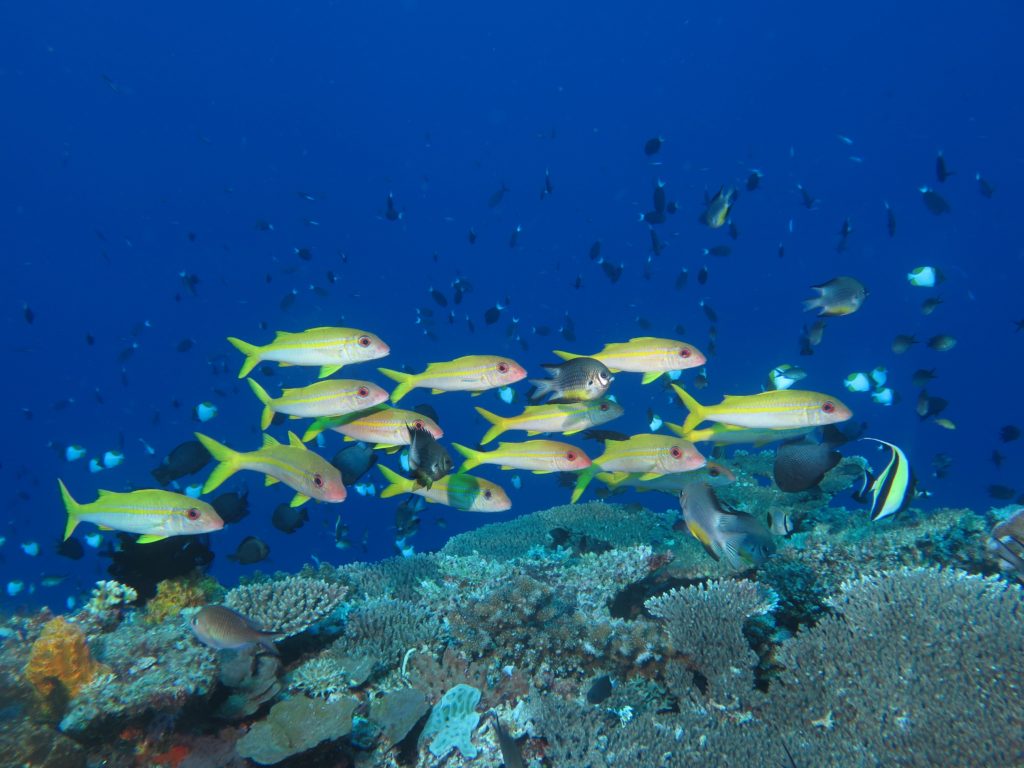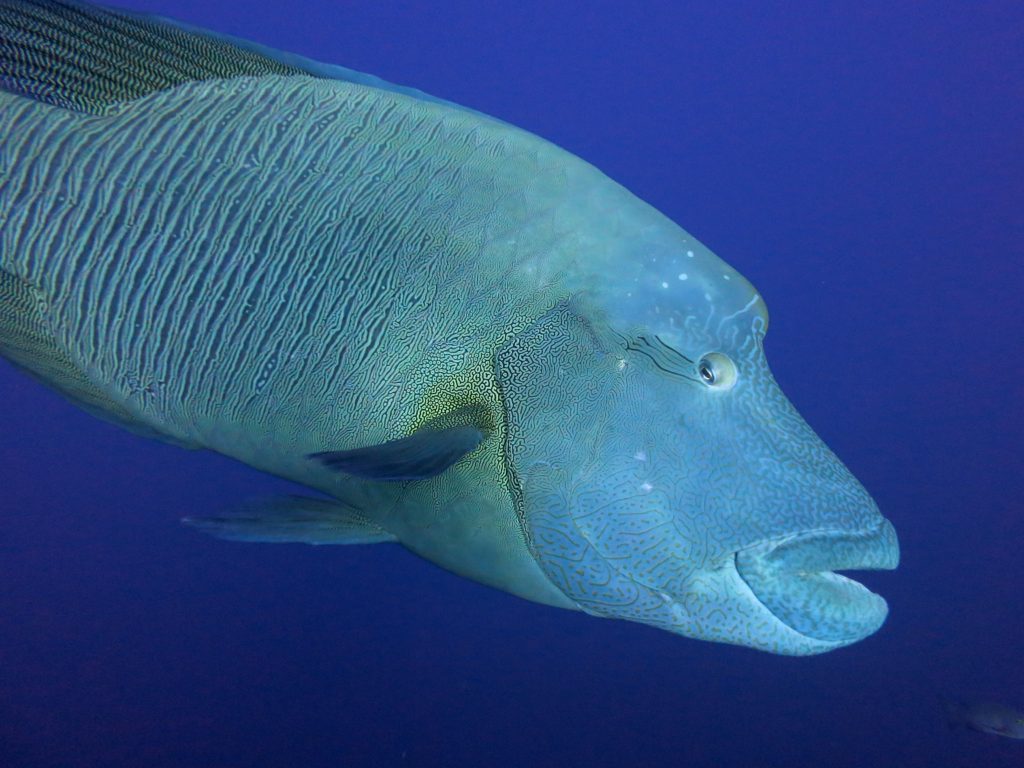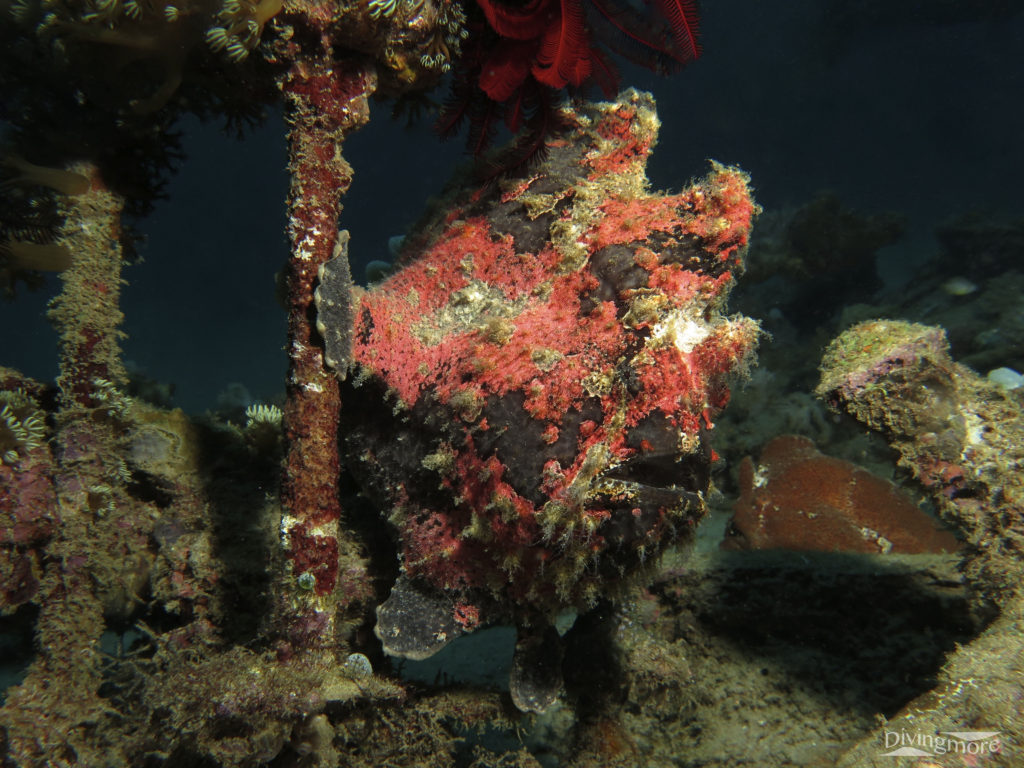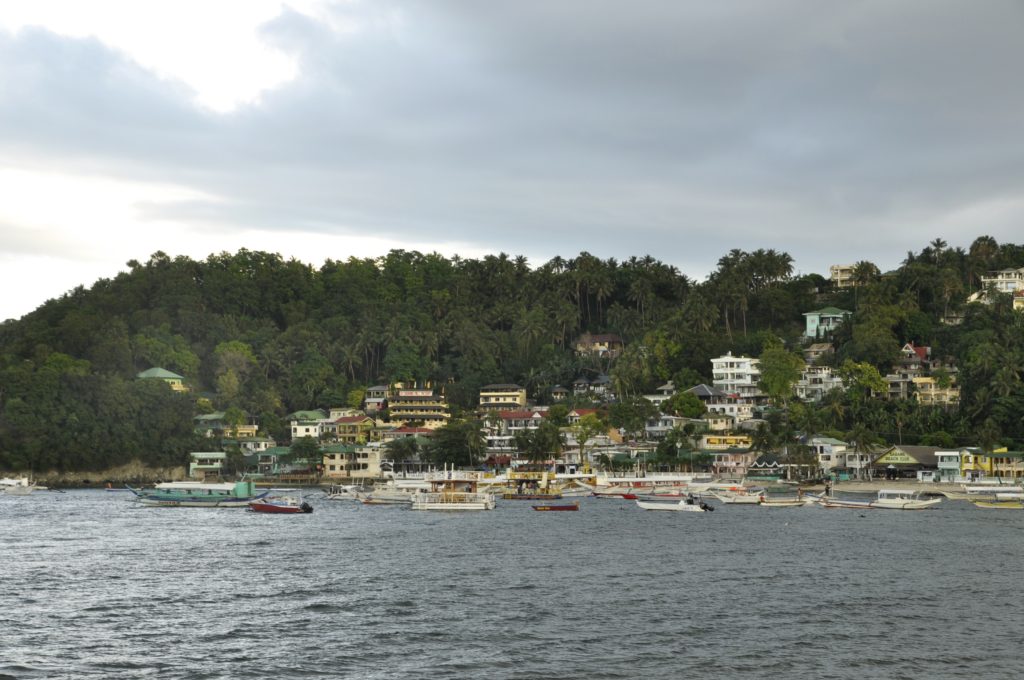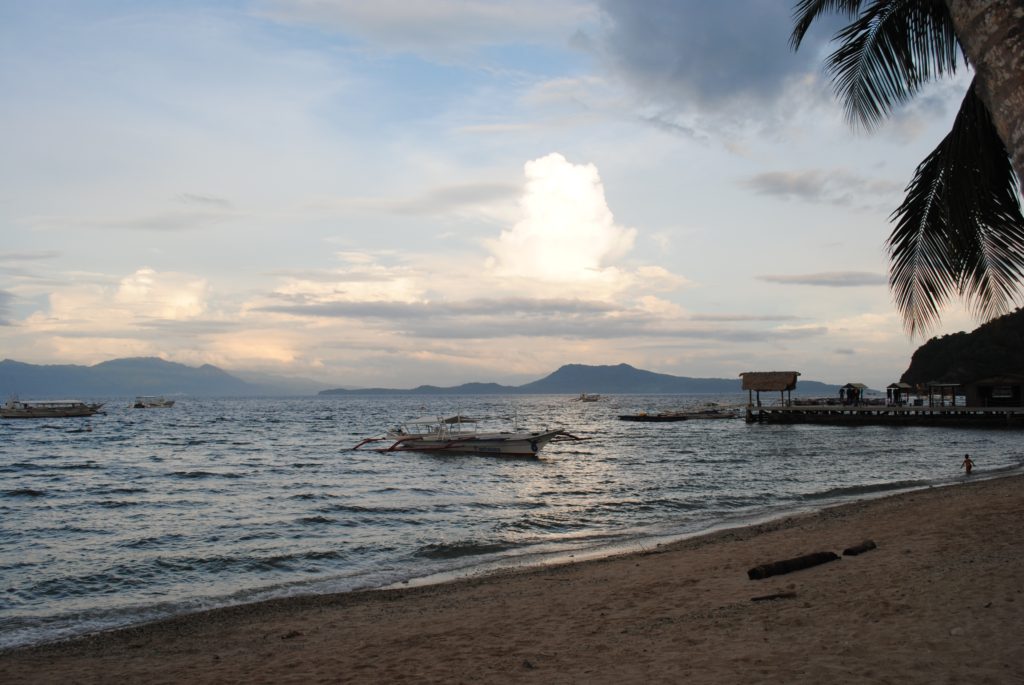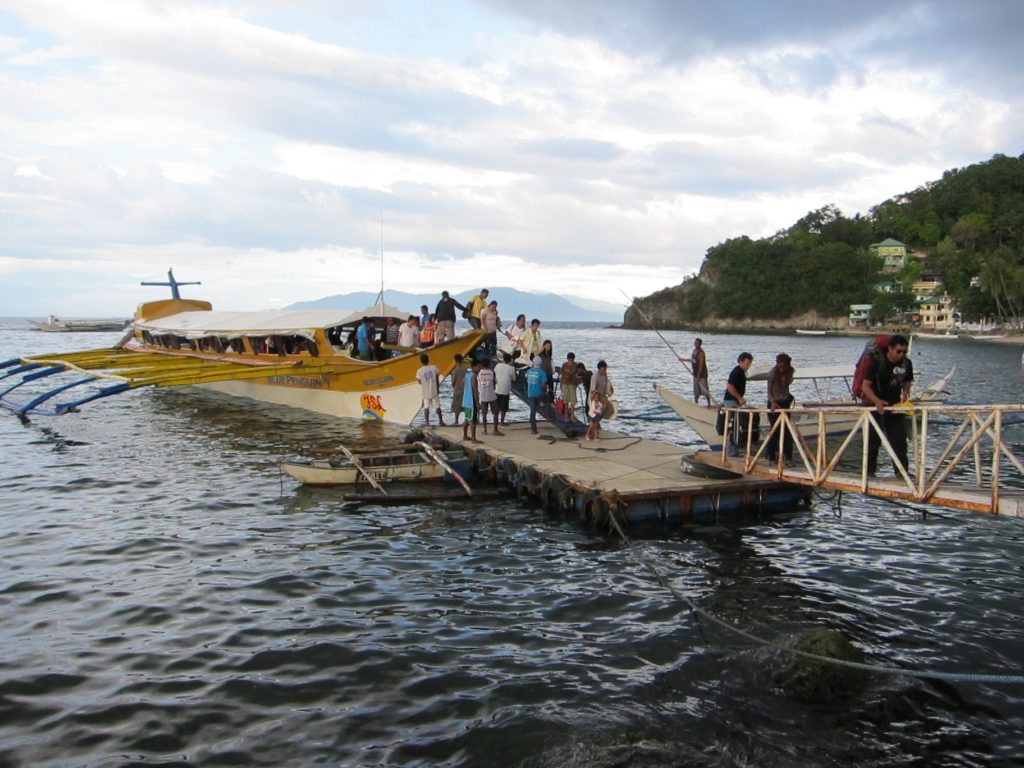Why go diving in Moalboal, Philippines
The main attraction for visiting Moalboal is diving or snorkeling with the sardines. It’s definitely great fun diving with the huge school of sardines but there is much more to Moalboal. Diving along the reef and Pescador island is excellent for macro and we saw many frogfish, ghost pipefish, variety of nudibranchs, turtles, pygmy seahorses and even blue ring octopus.

Moalboal beach – or Panagsama beach to be more precise as this is where most hotels and restaurants are – is a very relaxed little beach town with many good food and drink options as well as places to stay. One can do land trips to waterfalls and go canyoning and hiking as well. Importantly Moalboal is relatively easy to access from Cebu.

We hear that sometimes divers see whale sharks and thresher sharks as well as tuna attacking sardine school in Moalboal. Threshers were particularly common ten years ago we were told. We did not see any of the big stuff – but it is still amazing to see a huge school of sardines in what is quite densely populated area. Hopefully as protection for marine life improves pelagics will be back too.

What to see
Logistics
Moalboal is on the southwest coast of Cebu island. After flying to Cebu one can reach it by public bus – about 3 hours, or private transfer – around 2 hours. Public bus drops you off on the main road and there is about 10 minute tricycle ride to the beach where most hotels and restaurants are. We always dived with Cebu Dive Center which is a well organized professional small diveshop right on the beach. Sardines were usually right in front of the diveshop – at the reef drop-off about 30 meters from the shore. Diveshop has a beach bar where divers tend to congregate and swap stories – a very friendly and laid back place perfect for sundowners.
There are many options to stay – we liked Maya’s Native Garden. It is not on the beach but has nice very spacious traditional style cottages with all modern amenities. Their food was delicious too. Panagsama beach and Moalboal area is developing with some speed and even in the three years that we have been visiting it we saw many new resorts being build and new restaurants open. It is still though a small, laid back place with excellent diving not yet fully impacted by mass tourism (as of 2017). If you have a week or so Moalboal trip can be combined with a trip to Malapascua to see thresher sharks or Dauin with superb macro.




